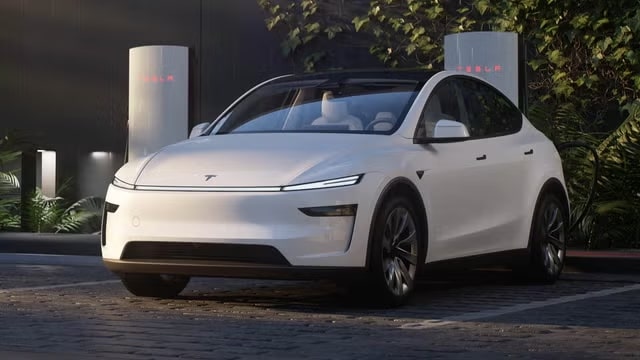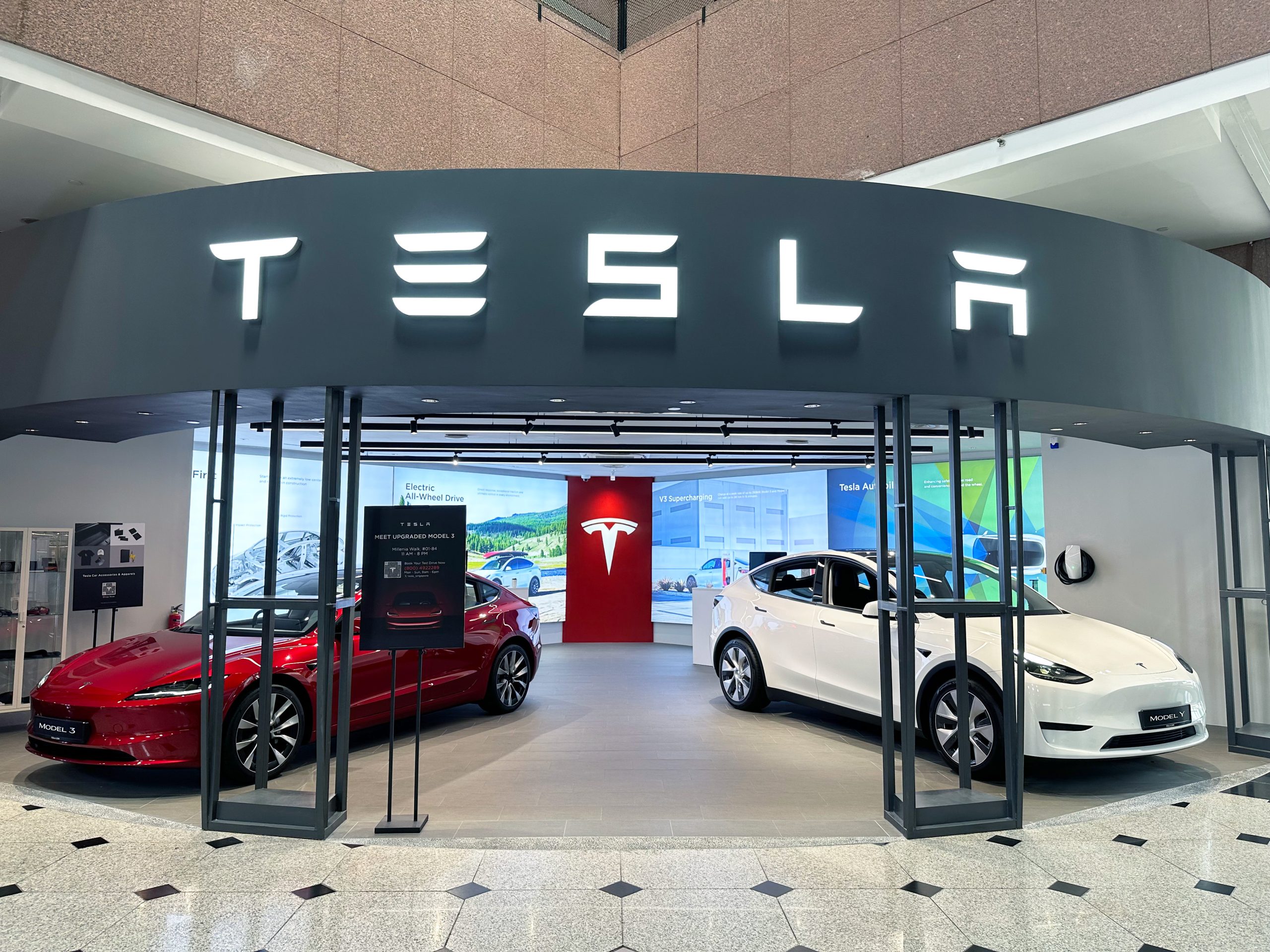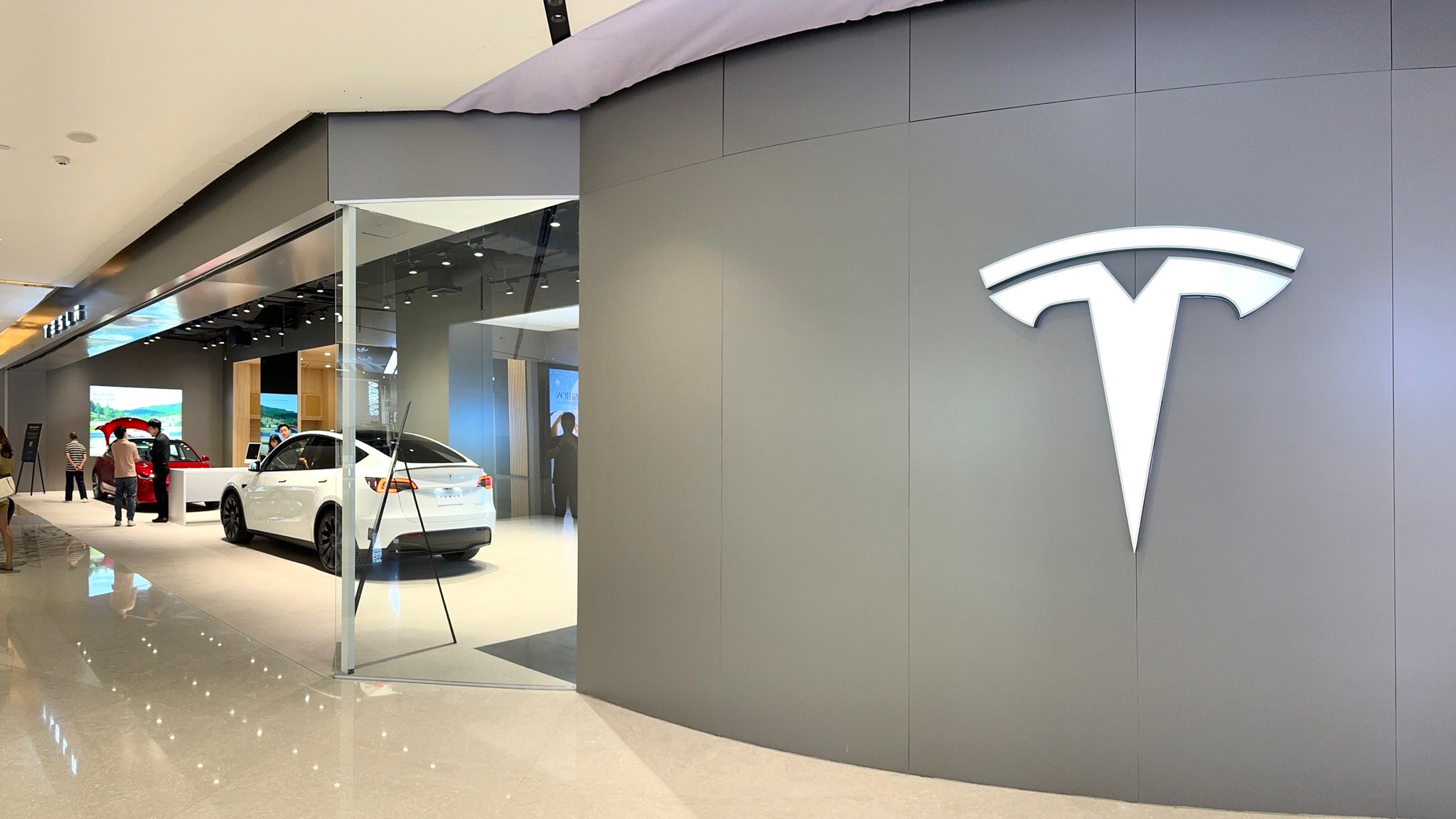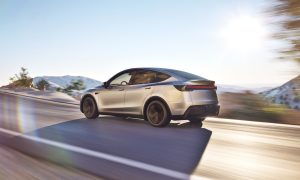News
Tesla’s Model 3 will be big news in 2017 and why you should care

The Tesla Model 3 will reach a pinnacle of excitement and hype in 2017, with projected international pricing and production scheduled to begin mid-year. These are important times for Tesla, as the Model 3 is the vehicle that CEO Elon Musk envisioned with his original Master Plan.
A new audience for Tesla
A minimum of 215 miles of range per single charge. Under 6 seconds: Zero to 60 mph. Seating for 5 adults. Designed to achieve 5-star safety rating. Autopilot hardware. Supercharging capable. Musk has said that “you will not be able to buy a better car for $35,000,” while also indicating that options will bring the typical price of a Model 3 to about $42,000.
All indications are that the Model 3 will be a four-door sedan that’s a bit smaller than the Tesla Model S. Likely comparable cars are the BMW 3 Series, Jaguar XE, and Mercedes C-Class. Those models are no mid-range Hondas or Hyundais, no Nissan Versas or Chevy Sparks with base prices under $15,000. So the Model 3 will have an upscale audience but not the mass public— at least not yet.
So, yes, it’s nice to see another Tesla vehicle coming to market, but aside of that, what’s so significant about the Model 3?
The Tesla Master Plan as embodied in the Model 3
Over a decade ago, Musk announced that Tesla’s long term plan was to build a wide range of vehicles, including affordably priced family cars. This was part of a larger goal to help expedite the move from a “mine-and-burn hydrocarbon economy towards a solar electric economy.” Most electricity is produced at an electric power plant where some fuel source, such as coal, oil, natural gas, or nuclear energy, produces heat that boils water to create steam. The steam, under high pressure, is used to spin a turbine. Centralized electricity, then, frequently perpetuates reliance on fossil fuels. Recent anthropogenic emissions of greenhouse gases from fossil fuels are the highest in history, and climate changes have had widespread impacts on human and natural systems. When we reduce our reliance on fossil-fuels, we can decrease the proportion of greenhouse gases in the atmosphere. Human activity, after all, has contributed to anthropogenic climate change.
What’s the Model 3 got to do with all this?
The important distinction to note here is between electric vehicles powered from a centralized grid and electric vehicles powered by decentralized solar energy. When combined with a modestly sized and priced solar panel from SolarCity — the Tesla-owned solar service provider — a Model 3 consumer can draw upon decentralized energy. When energy is produced close to where it will be used, rather than at a large plant elsewhere and sent through the national grid, a Tesla consumer reduces carbon emissions and contributes to a greener climate and economy.
The Model 3 will bring the capacity to become relatively energy independent to a whole new segment of society. Tesla’s reconceptualization of a transportation and electricity generation linkage will become increasingly apparent and important in 2017 as the Model 3 comes closer to our city streets.
The triad of Model 3 electric vehicle, solar roof, and Powerwall 2
In addition to ramping up Model 3 production, Tesla’s engineering teams will work in conjunction with Panasonic to set manufacturing at SolarCity’s Buffalo plant in 2017. That is the starting point for SolarCity solar roof products. The result? Solar cells, solar modules, and solar roof tiles.
Here’s how it works. A residence can capture the sun’s free, abundant energy source through rooftop solar tiles, turning sunlight into electricity for immediate use. Tesla’s solar roof tiles will be designed in four different and very appealing styles. Once the Jones family gets these solar roof tiles, so, too, will the Smiths want them. You see where this is going…
And there’s more to the solar roof tiles than merely converting sunlight. That sunlight-turned-electricity can be stored in a Powerwall 2 home battery pack. In early 2017, Tesla will initiate the first deliveries and installations of the Powerwall 2, which is being produced at the Gigafactory in Nevada. The Powerwall 2 can power an average two-bedroom home for a full day.
It can also be used to fire up your Model 3.
So, let’s review. Solar produces zero carbon emissions and reduces dependence on fossil fuels. The Model 3 electric vehicle is priced to meet the needs of an entirely new market. That market will be able to use solar roof tiles to turn sunlight into electricity, and the Powerwall 2 will store electricity that can, in turn, power up the Model 3. By matching Tesla solar roof tiles with the Powerwall to power your Model 3, you can extend the environmental and cost benefits of solar energy.
This is big stuff, and it’s clearly been under-reported. The Model 3 has the capacity to have huge consequences on the way the typical U.S. consumer considers electricity generation and transportation alternative. It’s Tesla in the lead, all over again.

News
Tesla contract with Baltimore paused after city ‘decided to go in a different direction’

Last Summer, Tesla landed a $5 million contract with the City of Baltimore for a fleet of electric vehicles for the local government. However, Mayor Brandon Scott decided to pause that investment in September after the City “decided to go in a different direction.”
This is according to John Riggin, spokesman for the city’s Department of General Services. Riggin confirmed that the contract with Tesla has not been fulfilled, and Baltimore is going with other options for the time being:
“No Tesla units have been ordered, and none are in the City’s fleet.”
It now seems that the contract, which was set to be run until 2027, is not really a typical “contract” in the sense of the word. Riggin said the city is not obligated to spend the money for vehicles from Tesla, and that it is evaluating offerings from a variety of OEMs, including Ford and General Motors.
Tesla chosen over Ford for $5 million Baltimore City EV fleet
Riggin said the value of the contract is more of a ceiling and not necessarily an obligation to spend the committed amount in full.
The contract has not been canceled officially, but City Comptroller Bill Henry said to the Baltimore Sun that it has gone back to purchasing Mustang Mach-Es from Ford, the vehicle that was snubbed for Teslas back in July when things were initially decided.

The timing of the pause is interesting, and it does not seem to have anything to do with CEO Elon Musk’s direct involvement with the Trump administration, although the EV maker’s frontman was already vocalizing his distaste for the Democratic White House run by the Biden Administration.
Baltimore has a citywide goal of achieving carbon neutrality by 2045, and has used EVs in its fleet for several years to reach that goal. It plans to electrify the city vehicle fleet by 2030.
News
Tesla at risk of 95% crash, claims billionaire hedge fund manager
Tesla stock has been extremely volatile as of late amidst souring sentiments over CEO Elon Musk’s political leanings.

Christer Gardell, a Swedish billionaire and hedge fund manager, issued a stark warning about Tesla stock and what he believes are bubbles in the stock market. The billionaire’s insights about Tesla were shared during an interview with EFN.
Tesla stock has been extremely volatile as of late amidst controversies and souring sentiments over CEO Elon Musk’s increasingly political leanings.
Alleged Tesla (TSLA) risks
Gardell did not mince words about Tesla, stating that the electric vehicle maker’s valuation could drop as much as 95% due to the “circus” surrounding its CEO.
“Tesla, especially now with the whole Musk circus going on everywhere, is probably the most expensive stock on the global stock exchanges right now. It could go down 95% – and maybe it should go down 95%,” he said in the interview.
The Swedish billionaire sees Tesla as fundamentally a car company. Thus, he does not understand why the market has given the EV maker such a high value. For context, the Tesla story has been changing in recent years, with the company growing its energy business and delving into AI and robotics.
Gardell Slams “Eternal Bubble“
Gardell believes the EV maker has become a poster child of sorts of a market that has become speculative, where share prices do not reflect true valuations anymore, as noted in a CarUp report. The hedge fund manager noted that in Tesla’s case, this “eternal bubble” should have burst long ago.
“I have commented that it should have burst over the past five years, but it still hasn’t. The valuation is incomprehensible,” he explained. The hedge fund manager, however, noted that once the crash happens, the decline would be dramatic.
“It’s always hard to say when. It could happen in a month, six months, a year, three years, or five years – it’s impossible to answer. Because there’s so much money dominating the stock market now, and they don’t care about the value of the shares, they speculate on price movements,” he said.
U.S. Stocks Overpriced, Europe Offers Value
Looking beyond Tesla, Gardell flagged broader risks in the U.S. stock market, which he described as significantly overvalued. “American stocks have received very large flows recently. If you look at the American stock market, it is very expensive, both from a purely absolute perspective and from a historical perspective,” he stated.
In contrast, Gardell touted European stocks as a more attractive option for investors. “And the difference between American stocks and European stocks has never been greater. Normally, European stocks have had a discount of 20%, now it is 40%. And that is too high,” he noted.
News
Tesla store shooting incident under investigation

Oregon police are investigating a shooting incident involving a Tesla store.
A Tesla store in Tigard, a city southwest of Portland, was vandalized around 2:00 am on Thursday, March 6.
“The damage was discovered by employees who arrived for work this morning (3/6/25) at the dealership on SW Cascade Avenue. Investigators believe at least 7 shots were fired, damaging 3 cars and shattering windows. One bullet went through an office wall and into a computer monitor. Fortunately, this happened overnight when the property was unoccupied,” stated a Tigard Police report.
Crime scene technicians and investigators are gathering physical and video evidence of the shooting. Tigard Police did not officially announce a motivation for the shooting at the Tesla store. However, they acknowledge that a few Tesla locations have been targeted across Oregon and the nation.
Tesla locations across the United States and abroad have been experiencing attacks recently. Most of the company’s locations experience arson attacks. For instance, in France, around a dozen Tesla vehicles were reportedly torched in a suburb near Toulouse. Meanwhile, in Massachusetts, a few Tesla Superchargers were allegedly set on fire near a shopping center. Tesla protests have also started in various locations.
Police have not provided an official reason or motivation for all the arson attacks and the Oregon shooting because they are still under investigation. However, Elon Musk is definitely at the root of the matter.
Elon Musk has recently found himself the target of plenty of ire in the United States and Europe. Tesla is taking the brunt of all the anger pointed toward Musk.
-

 News4 days ago
News4 days agoSpaceX announces Starship Flight 8’s new target date
-

 News2 days ago
News2 days agoTesla at risk of 95% crash, claims billionaire hedge fund manager
-

 News5 days ago
News5 days agoTesla launches fresh U.S. promotions for the Model 3
-

 News2 days ago
News2 days agoTesla contract with Baltimore paused after city ‘decided to go in a different direction’
-

 Elon Musk6 days ago
Elon Musk6 days agoTesla mulls adding a new feature to fight off vandals as anti-Musk protests increase
-

 Elon Musk3 days ago
Elon Musk3 days agoTesla UK sales up over 20% despite Elon Musk backlash
-

 News6 days ago
News6 days agoTesla starts Model Y ‘Launch Edition’ deliveries in the U.S.
-

 News7 days ago
News7 days agoTesla’s lead designer weighs in on plans for these two Model Y colors



